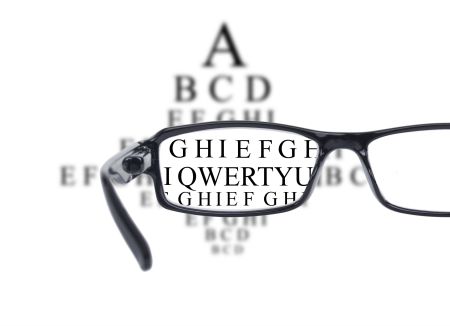The right lenses make a world of difference, preventing unnecessary eye strain and promoting healthy eyes. Before finalizing your eyewear purchase, research the various lens types, materials, and coatings to know which combination is best for your eyes.
VISION CORRECTION LENSES
SINGLE-VISION RX LENSES – Single-Vision Rx Lenses correct nearsightedness or farsightedness. Doctors typically prescribe either a full-time wear distance Rx or a reading-only Rx. Single-vision lenses can be ordered as clear, tinted sunglasses, or photochromic lenses (clear inside and dark outside). Part-time wear sunglasses can be made with prescription tinted or polarized sun lenses.
REGULAR BIFOCALS (“FLAT-TOP 28”) – Bifocals correct both nearsightedness and farsightedness in a single pair. “Flat-top 28” refers to regular bifocal lenses where the distance and reading portions are separated with a 28 mm line rather than one going from edge-to-edge. Full time wear lenses are clear, but wearers have the option to have part time tinted or polarized sun lenses.
PROGRESSIVES (“NO-LINE BIFOCALS”) – Progressive lenses also correct both nearsightedness and farsightedness in a single pair, but provide a graduated range of vision from distance to near, without a line. They are sometimes referred to as “no-line bifocals,” “no-line trifocals,” or “vari-focals.” Full time wear lenses are often clear. Wearers also have the option of getting progressives as Transitions® lenses that are clear inside and get dark outside, as well as tinted or polarized full time sun lenses.

LENS MATERIALS
There are three different materials that you can have your prescription lenses made from:
LENS COATINGS
PREMIUM ANTI-GLARE COATING – This treatment, also known as anti-reflective, is ideal for computer use and night driving. Anti-reflective coating works by increasing the light transmission through the lenses, providing you with the clearest, sharpest vision at all times. Anti-reflective coating also allows other people to see your eyes through the lenses, not the light reflection.
BLUE LIGHT BLOCKING ANTI-GLARE COATING – In addition to all the benefits mentioned above, these blue light blocking lenses protect your eyes from the harmful blue light emitted by digital devices such as computers, tablets, and smartphones. The anti-glare coating reduces glare, eyestrain, and even gives your lenses a more polished look.
UV COATING – Choose lenses lined with 100% UV protection on both sides to prevent light damage that can cause cataracts and lead to macular degeneration. UV coating also protects eyelids and the area of sensitive skin around your eyes from too much sun exposure, which can lead to skin cancer. (For further protection, always wear sunglasses when outdoors.)
